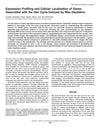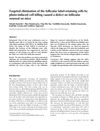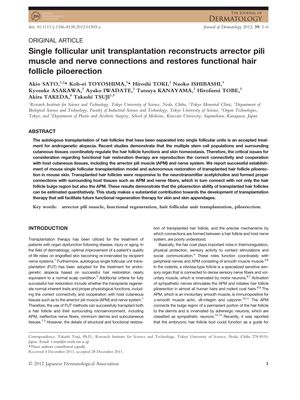TLDR Hair transplant surgery can rebuild muscle and nerve connections, allowing transplanted hairs to stand up like normal hairs.
The study from 2012 showed that single follicular unit transplantation (FUT) in mice can reconstruct the arrector pili muscle and nerve connections, enabling the restored hair follicles to perform piloerection, which is the ability to stand up in response to stimuli. The transplanted hair follicles responded to acetylcholine and connected correctly with the host's tissues, indicating that they could autonomously reestablish functional connections necessary for piloerection. This research suggests that FUT could be used in regenerative therapies for restoring hair follicle function in skin damaged by various conditions.
 396 citations
,
May 2011 in “Cell stem cell”
396 citations
,
May 2011 in “Cell stem cell” Nerve signals are crucial for hair follicle stem cells to become skin stem cells and help in wound healing.
28 citations
,
March 2011 in “Journal of Investigative Dermatology” 294 citations
,
February 2011 in “Cell” Nephronectin helps attach muscle cells to hair follicles.
 27 citations
,
August 2005 in “The journal of investigative dermatology/Journal of investigative dermatology”
27 citations
,
August 2005 in “The journal of investigative dermatology/Journal of investigative dermatology” Researchers found new genes involved in hair growth, which could help develop new hair treatments.
86 citations
,
May 2002 in “Journal of comparative neurology” Nerve growth in mouse skin and hair follicles happens in stages and is closely linked to hair development.
112 citations
,
February 2001 in “Journal of Investigative Dermatology” Neuropeptides affect hair growth, with some speeding it up and others slowing it down.
949 citations
,
January 2001 in “Cell” Adult mouse skin contains stem cells that can create new hair, skin, and oil glands.
 17 citations
,
December 2010 in “Journal of Investigative Dermatology”
17 citations
,
December 2010 in “Journal of Investigative Dermatology” Flightless I protein affects hair growth, with low levels delaying it and high levels increasing hair length in rodents.
 8 citations
,
September 2002 in “Genes to Cells”
8 citations
,
September 2002 in “Genes to Cells” Killing specific cells in hair follicles can lead to hair growth problems in mice.





